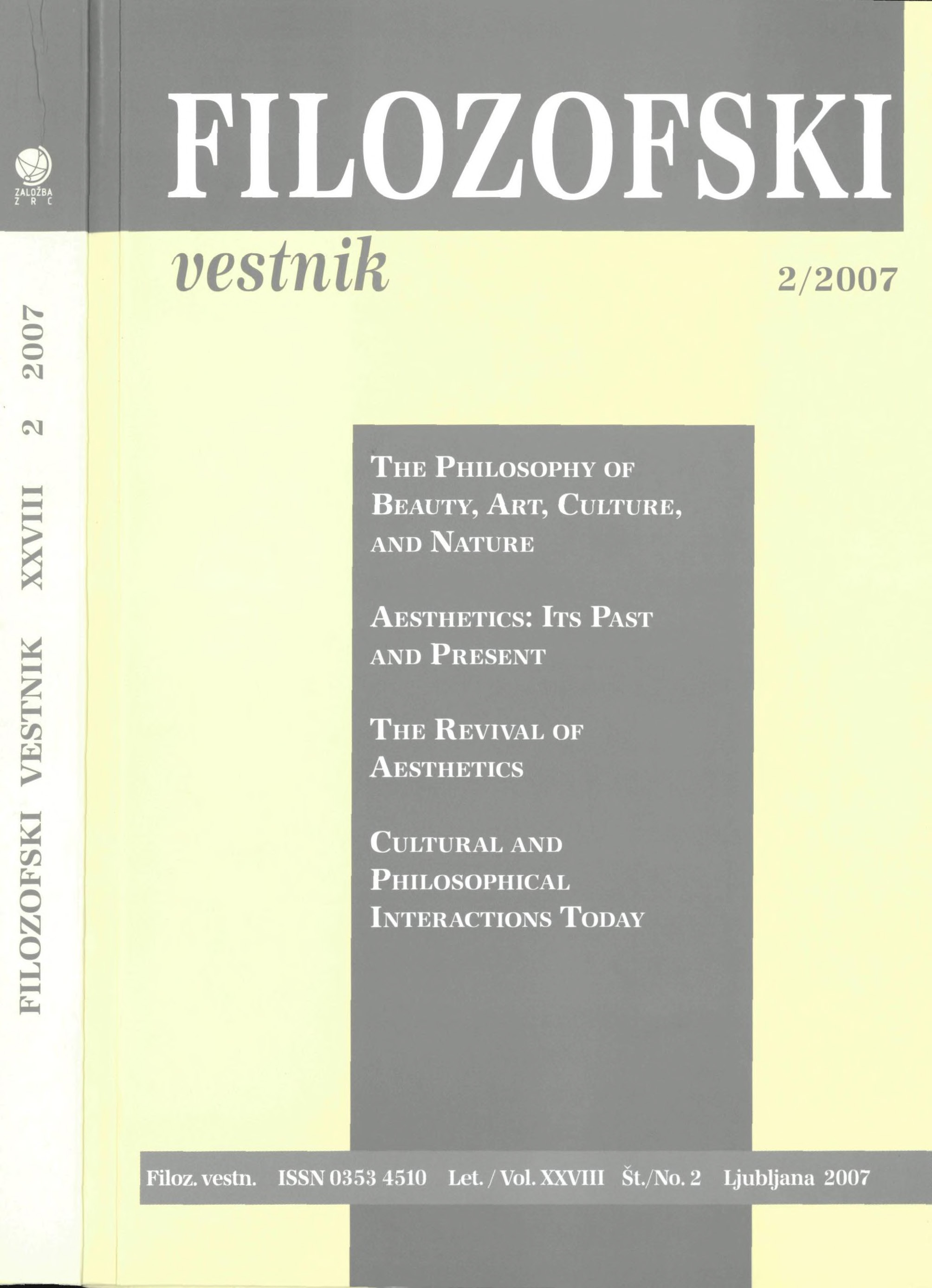Somaesthetics and the Revival of Aesthetics
Povzetek
This paper examines the ten-year history of somaesthetics – describing the field's origins and genealogical roots, explaining its terminology, analyzing its structure, tracing its reception, exploring its most interesting applications, and responding to the most important criticisms that have been directed at it. Somaesthetics, as the paper shows, emerges from the framework of my work in pragmatist aesthetics which sought to revive aesthetics by bringing art closer to life and bridging the presumed divide between the aesthetic and the practical while also advocating an idea of ethics as an art of living. One way to bring more life to aesthetics is to emphasize the role of the living body in art and aesthetic experience. Another strategy of revival is to expand the field of aesthetics to make it more relevant to more people by including practices of somatic stylization and enhanced somatic perception (aisthesis). Somaesthetics, a discipline of both theory and practice, deploys these means of revival, and seems to have had some positive influence. It has been applied by diverse authors in many different fields – from performance art and computer design, to sports, feminist issues of identity, and the use of technological body enhancements in the art of living. The three main branches of somaesthetics are introduced, and the complex structure of the field is used in refuting some of the typical criticisms made against it. Somaesthetics is not a blanket apology for the dangerous excesses of our body culture, but rather a site for the ideological critique of the dominant somatic ideals. Its interest in the body is not a celebration of irrationality or the abandoning of critical reflection.Prenosi
Podatki o prenosih še niso na voljo.
Prenosi
Objavljeno
2007-01-01
Kako citirati
Shusterman, R. M. (2007). Somaesthetics and the Revival of Aesthetics. Filozofski Vestnik, 28(2). Pridobljeno od https://ojs.zrc-sazu.si/filozofski-vestnik/article/view/3179
Številka
Rubrike
The Revival of Aesthetics
Licenca
Avtorji jamčijo, da je delo njihova avtorska stvaritev, da v njem niso kršene avtorske pravice tretjih oseb ali kake druge pravice. V primeru zahtevkov tretjih oseb se avtorji zavezujejo, da bodo varovali interese založnika ter da bodo povrnili morebitno škodo.
Podrobneje v rubriki: Prispevki





